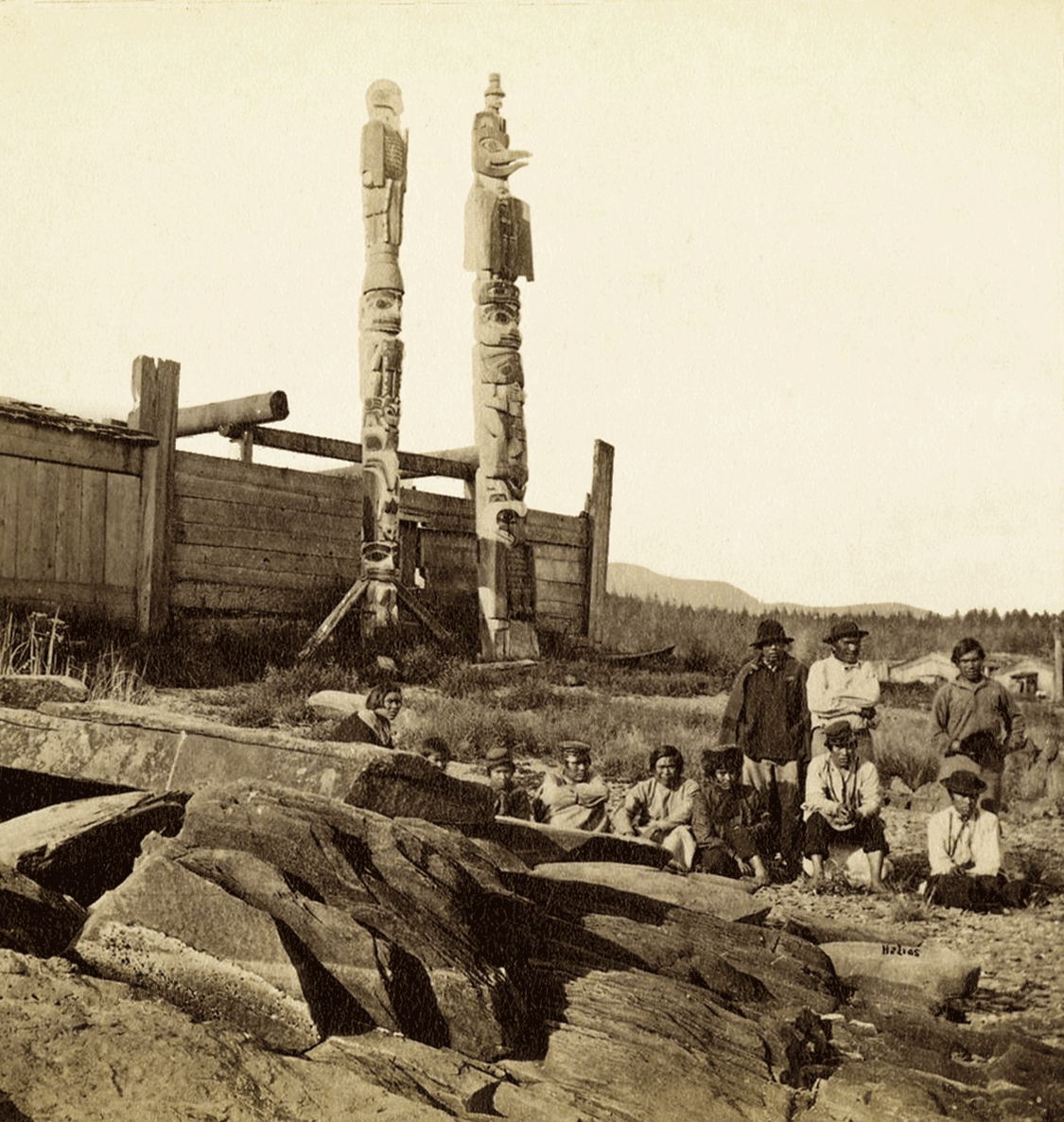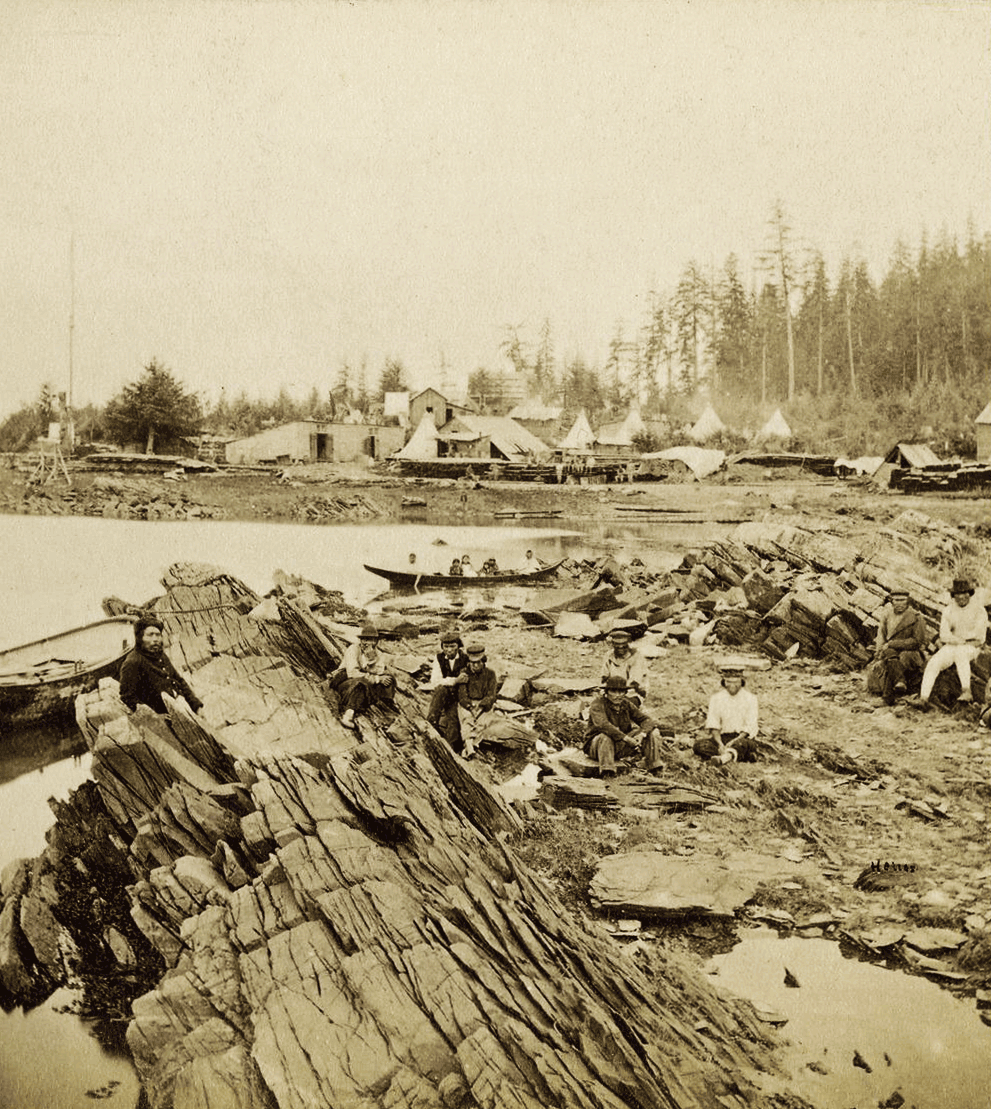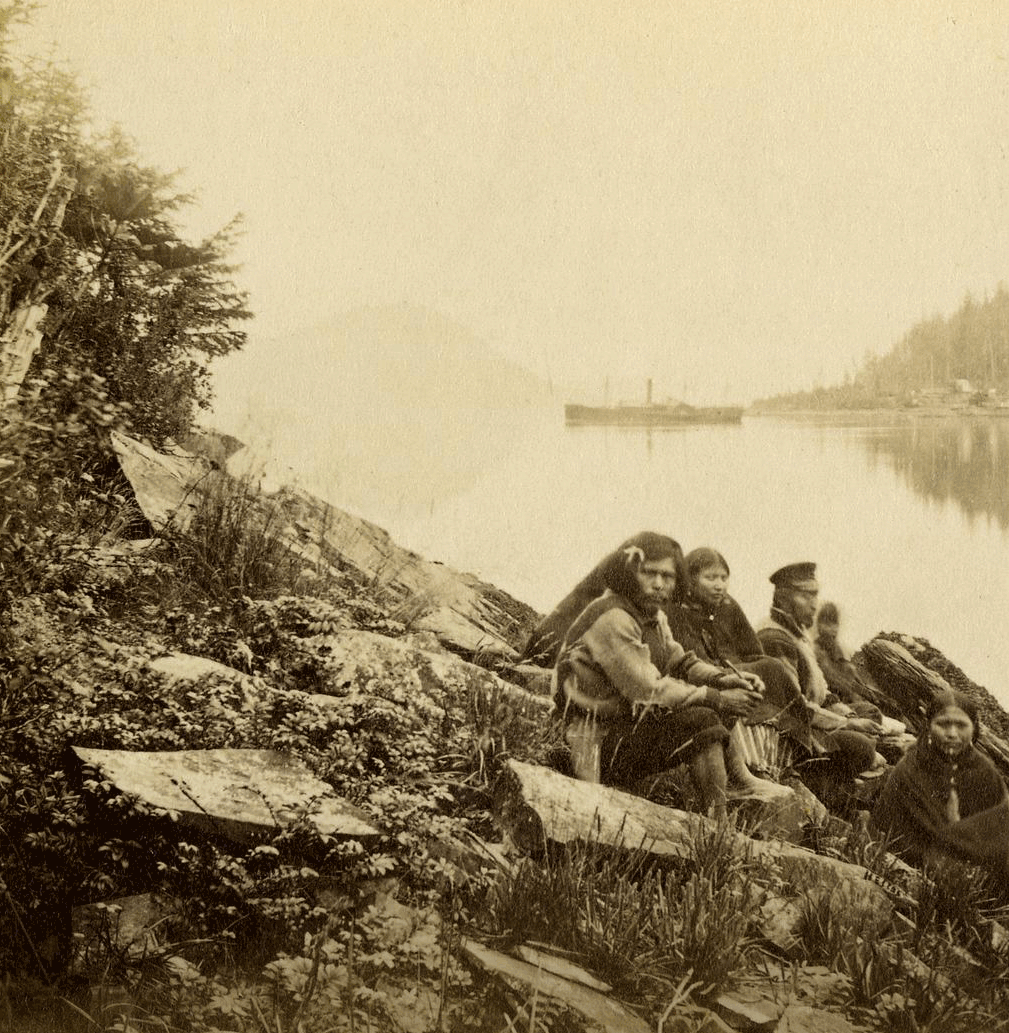Capturing Wrangell: The Photos of Eadweard Muybridge
In 1868, legendary photographer Eadward Muybridge traveled north to document the beginning of the U.S. Army in Alaska. His photos are the first know images of Ḵaachx̱ana.áakʼw and the construction of Fort Wrangel.
The S.S. Pacific rolling in high seas.
Muybridge in Alaska
Eadweard Muybridge, 38, landed in Fort Wrangel on August 15, 1868 aboard the SS Pacific. He arrived less than year after Russia sold its interests in Alaska to the United States and only months after the U.S. Army began clearing land to construct Fort Wrangel. Muybridge was part of an expedition led by General Henry Halleck to survey, document, and describe this territory unfamiliar to the American public and leaders in Washington, D.C.
As the expedition’s sole photographer, Muybridge had the unique opportunity to freeze time and preserve it in photographs. In 1866, photographer Charles Ryder documented the Stikine River for the Western Union telegraph line, but no known photos by him of Wrangell exist. Muybridge’s photos (and artwork by Vincent Colyer) give a unique glimpse into how the Tlingit village of Ḵaachx̱ana.áakʼw looked shortly before the Bombardment of Wrangell in December 1869.
To learn more about Eadweard Muybridge’s life and his impact in Alaska, please watch the highly entertaining documentary Exposing Muybridge. In 2019, the film’s producer, Marc Shaffer, visited Wrangell as part of his research and met with locals.
Theoretical Route
This theoretical route is based off the vantage points of where each photo may have been taken. Given that Muybridge had to walk and carry his photography equipment, this route assumes the shortest path between destinations.
The U.S. Army expected Muybridge to capture photographs of their new forts, but Muybridge always looked for ways to include the Tlingit in his photographs. In Muybridge’s photographs in Ḵaachx̱ana.áakʼw, people appear in the bottom half of the composition and are typically on the left or right side. The horizon tends to be at, or just above, the middle of the photograph.
#1. Gathering On the Rocks
The deeper you look into this photograph, the more people you will find. There are nine Tlingit men sitting on the rocky outcropping, six women and children in a canoe are behind them, and about a dozen blurry figures rest against the fort in the background. While this feels like a casual scene of everyday life, this photo likely took some planning. The rocky point in the foreground completely covered by the high tide. To get all these people for his photograph, Muybridge may have told everyone to show up at low tide to be included in the photograph. The low tide on August 16, 1868 was at 1:43pm.
Fort Wrangel is only a fort in name by this point. By the next year, these white tents would be replaced by a dozen wooden buildings. Muybridge made good on his promise to photograph the Army’s new forts, but he found ways to include the local Tingit.
This photo below shows the same scene, perhaps taken moments before the photograph above. This photograph is not as well-known as the version above. In this photo, several of the are standing on the rocks. There is a reflection in the water behind the men, whereas the more well-known version of this photo above has no reflection in the water, suggesting Muybridge manipulated the photo above to remove the reflection in the water for aesthetic reasons.
Photograph featured in the the 1969 Wrangell Comprehensive Development Plan by the Alaska State Housing Authority.
#2. Kadashan’s House
To capture this next photo, Muybridge may have needed only look to his right. If Muybridge pointed his camera east, he may have been able to capture this photograph of curious onlookers who gathered while he snapped his first photo. This group ranges from men to young boys. Like the gathering on the rock photograph, all these men have hats, trousers, and long-sleeve shirts.
What towers over the scene are the two distinctive Kadashan totems in the background. These iconic pieces of the historic Wrangell landscape served as favorite subjects for photographers well into the next century.
#3. Shakes Island
The blurry man in this photograph is likely the same man standing in the Kadashan totems photograph. This man may have walked Muybridge down the harbor to Shakes Island and introduced Muybridge to the head of the Naan.yaa.áyi clan, Kaawishté, the fifth Shakes.
Two totems loom in the background directly behind the men. On the left, the Killer Whale Hat Totem (Gonakadet) looks worn, soft with age and requires supports to prop it up. Next to it, the Bear Up The Mountain Totem appears with crisp carved edges and visible paint applied. It is believed that the Killer Whale Hat Totem was destroyed during the Bombardment of Wrangell one year later.
#4. Center of Indian Village
A group of six Tlingit people stand in front of a row of seven homes, including two totem poles. The man who may be Kaawishté stands among the group of two men and four women. There appear to be two women in the background in front of one of the homes. This area of Ḵaachx̱ana.áakʼw is a short walk to Shakes Island.
#5. Shustak’s Point 1
Muybridge’s next three photos feature this group of two men and three women sitting on the rocks inside Shustack’s Point, which sits at the end of a long peninsula in front of the town that creates the harbor. Two of the women are blurry and hard to see in this photograph.
For the second time, Muybridge posed Tlingit people in the foreground and Fort Wrangel far in the background. At the horizon, the SS Pacific sits at anchor, its full port side in view.
#6. Shustak’s Point 2
In order to capture a better photograph of this group, Muybridge may have moved closer to them. The people appear in much clearer detail, though one of the men and one of the women appear blurry. In the first photo, the men and women sat segregated. In this photograph, each man sits with a woman, indicating the group rearranged its sitting arrangement for this photograph.
#7. Shustak’s Point 3
This may be Muybridge’s final photograph as it is taken from near the end of Shustack’s Point, and therefore the furthest reach into the village of Ḵaachx̱ana.áakʼw. In the background, Muybridge features the same area where he took his photo of the small group of Tlingit men and women at the south end of the harbor.
Of all three photographs taken from Shustack’s Point, this is the only one where all five subjects are not blurry. Like his initial photo from Shustack’s Point, the men and women of this group sit separately.
Animated Stereoscope
Muybridge shot in stereoscope, which means he captured two side-by-side photographs. By using a stereoscopic viewer, anyone can experience these as 3D images. Another way to enjoy these stereoscopic images is to quickly flip between each one. Here are three of Muybridge’s photos animated this way.



Legacy
Eadweard Muybridge’s photographs are still powerful glimpses into the past. They remind us that history is told through perspective, not just of the storyteller, but of the lens.
In 1878, Muybridge would go on to create a new way of telling stories with lenses. He rigged up a sequence of cameras to capture a horse galloping, and in doing so, he invented a technology that is still with us today: motion pictures.

